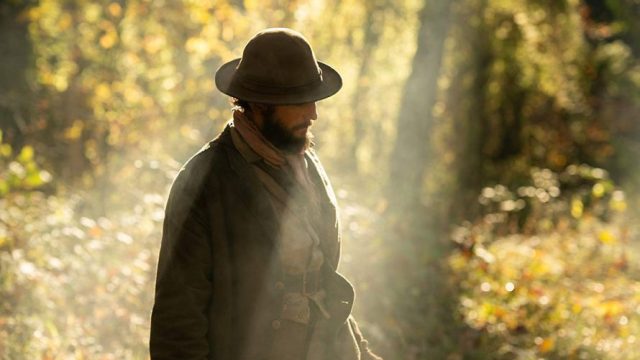We’ve been trained to expect movies to guide us with a heavy touch, to see the track laid out ahead of us and watch as the movie follows. Kelly Richardt sets up frames so that we see a multiplicity of possibilities – threats and friendship, beauty and utility. When story comes in bursts of dialog, instead of imposing order it lays the characters’ organizing principles over everything we see, explaining their point of view without affording it much control. Richardt can hold on frames for longer than expected without the pace feeling indulgent because her frames contain more possibility than most.
As The Solute’s review from Nerdinthebasement observes, this year’s First Cow is impeccably lensed in Reichardt’s preferred 1.37:1 “Academy” aspect ratio. Reichardt’s other pioneers ‘n problems epic, Meek’s Cutoff also uses the square-ish picture format. The choice in both cases seems counterintuitive. As far back as Shane widescreen has been used to depict the American prairie of the mid-1800s, staging behatted cowboys before vast unclaimed lands, open with possibility. But Reichardt’s movies don’t see Western expansion that way. The scarcity of the Reichardt frontier is palpable, and the chore of staying alive more visceral than in the romantic Westerns with cattle drives and beans over an open fire. Some non-Native people and cattle were the first to try their luck before the maps filled in. They found lands with a lot of new things to offer, except by way of the old comforts.
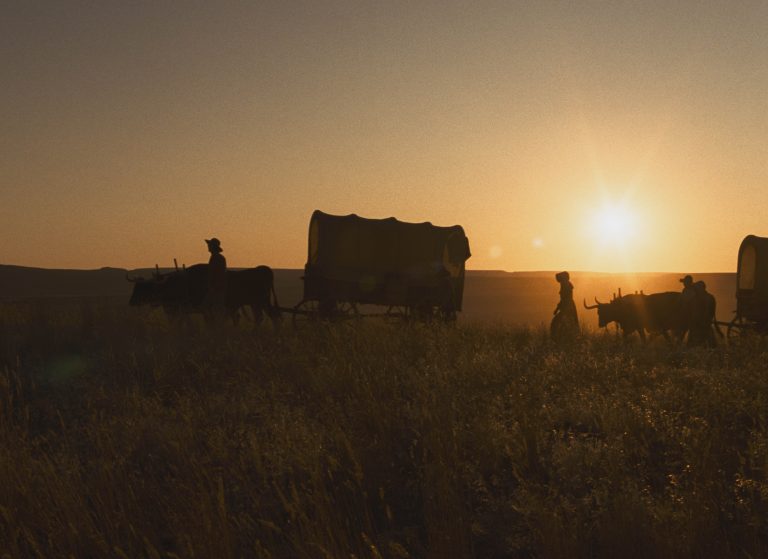
The boxy presentation describes a hardscrabble life in both films but through different effects. In Meek’s Cutoff, the characters take a less-traveled branch of the Oregon Trail, moving from the barely acquainted to the completely unknown. We’re denied the sweeping horizon of most Westerns and stay locked to the immediate surroundings with our walkers. These people haven’t arrived at their destination; the environment doesn’t offer possibility, only challenge, best to keep one’s head down and move forward. The square frame accents the possibilities in a standing figure rather than the landscape, but it also favors the obstacle over the trail. Cliffs fit comfortably, lakes have no edges.
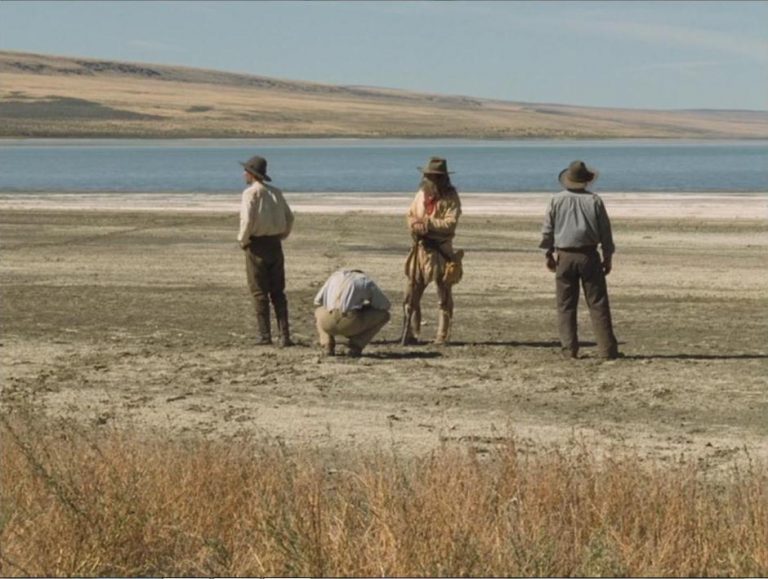
By contrast, First Cow arrives relatively quickly to an Oregon settlement only dreamed of in Meek, though the thin veneer of civilization only adds to the hostilities. Here the frames are composed with depth, spinning the x into a z axis and plunging compositions into the forests. The Oregon wilderness is layered in groups of friends or foes, food and fights. The frames often feel like hovels temporarily carved out by the characters amid hostile environments.
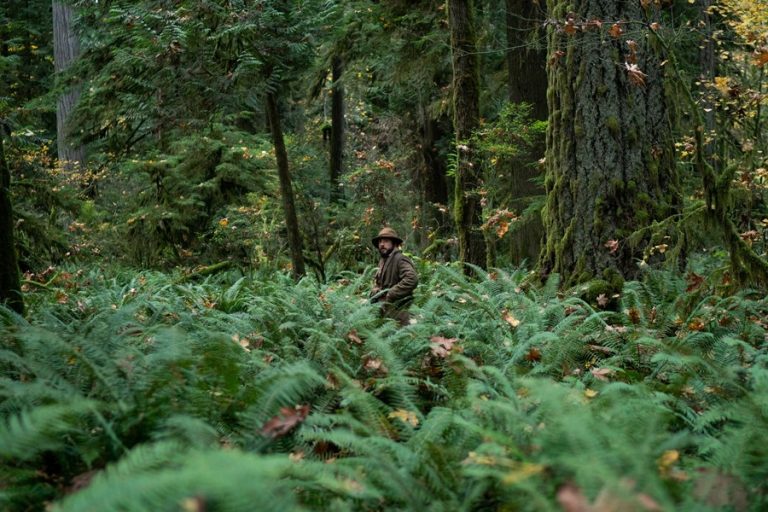
The settlers of First Cow attempt to enforce the rules of possession in a place unfamiliar with this way of thinking and uninterested in participating. The middles of the hovel-frames, prone as they are to intrusions by horses or a background street brawl, treat us to natural and manmade delights like skittish squirrels or warm baked goods. The lauded cow floats on the river like bovine Jesus, come to save the decivilizing souls. Though we know how this ultimately ends – spoiler alert, the West was settled and capitalism thrived until it didn’t – the movie wrings plenty of drama and humor from civilization’s tenuous hold on the center.
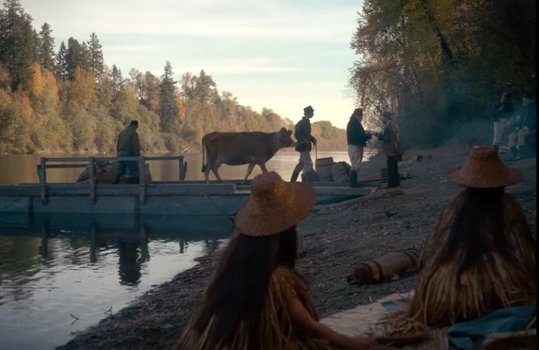
Returning to the old square, when even our televisions have long ago stretched and demanded widescreen, seems perversely fresh, maybe best described like the debate by the characters of First Cow as they try to categorize the unsettled land around them. One sees the newness in the untapped resources, while the other recognizes these trees have been around far before they got there. “Everything’s old when you look at it that way,” comes the reply. It’s all in how you frame it.

